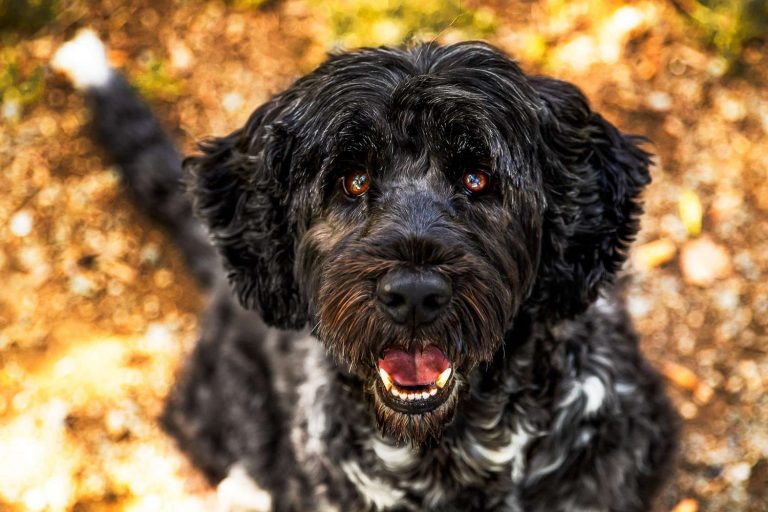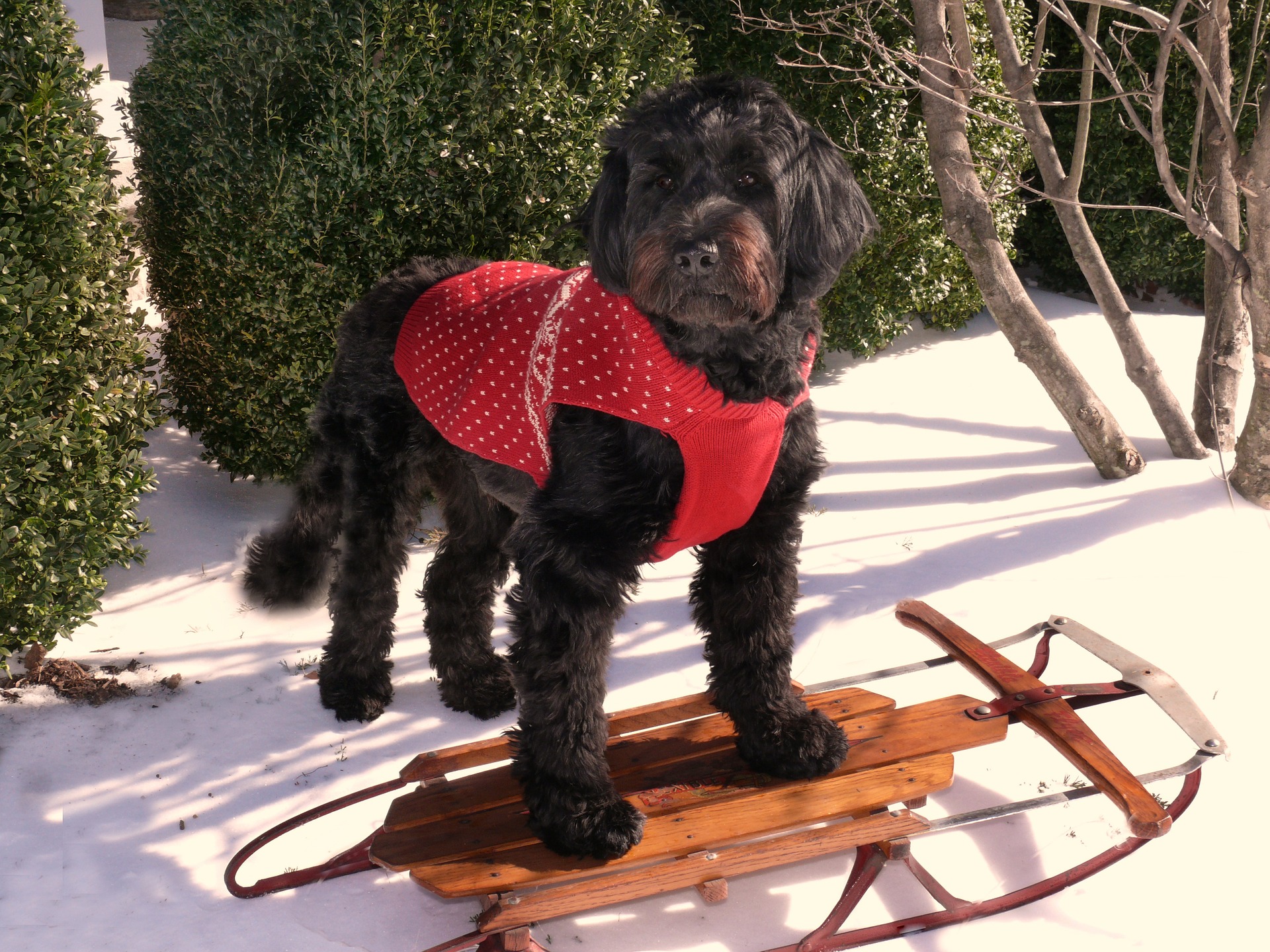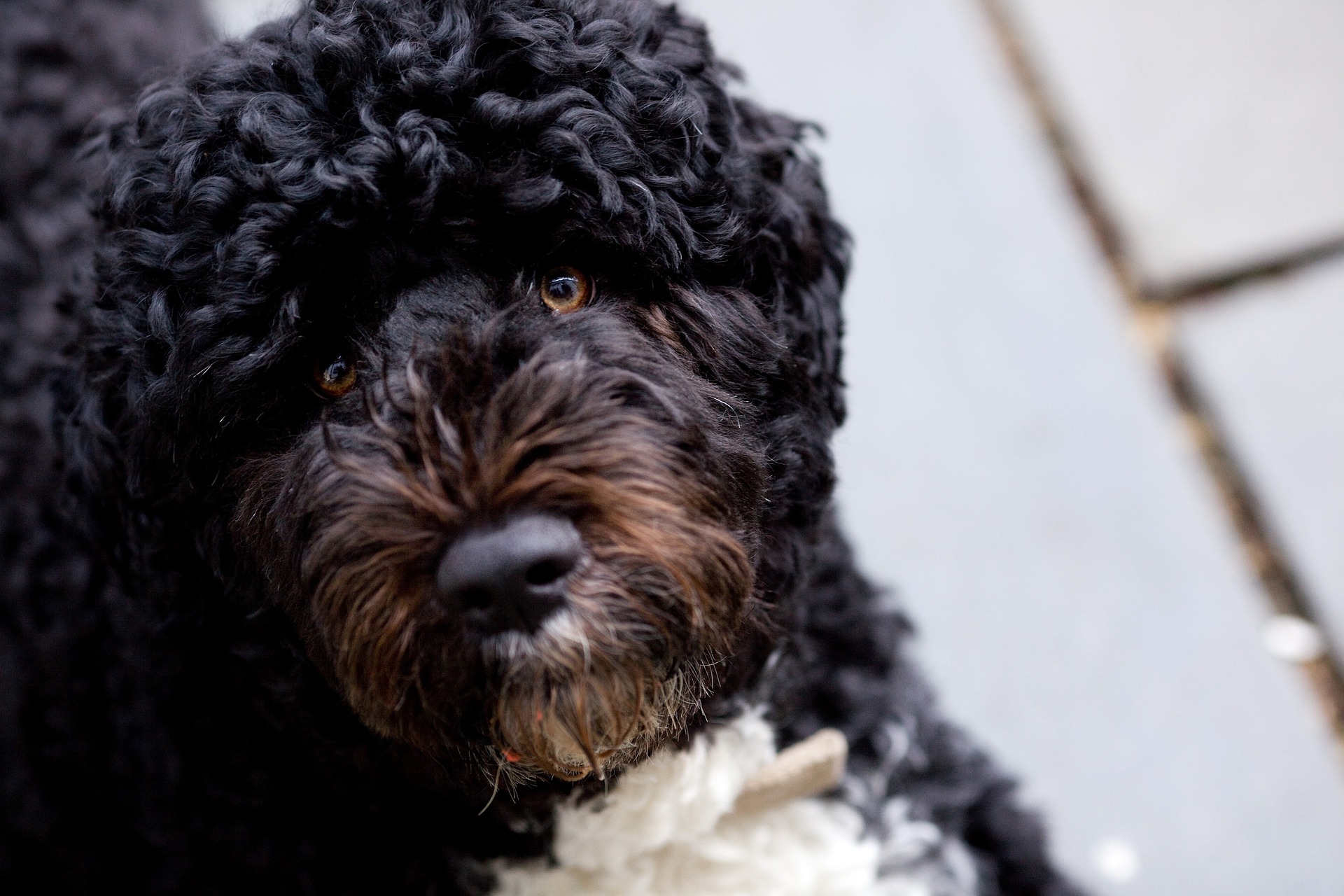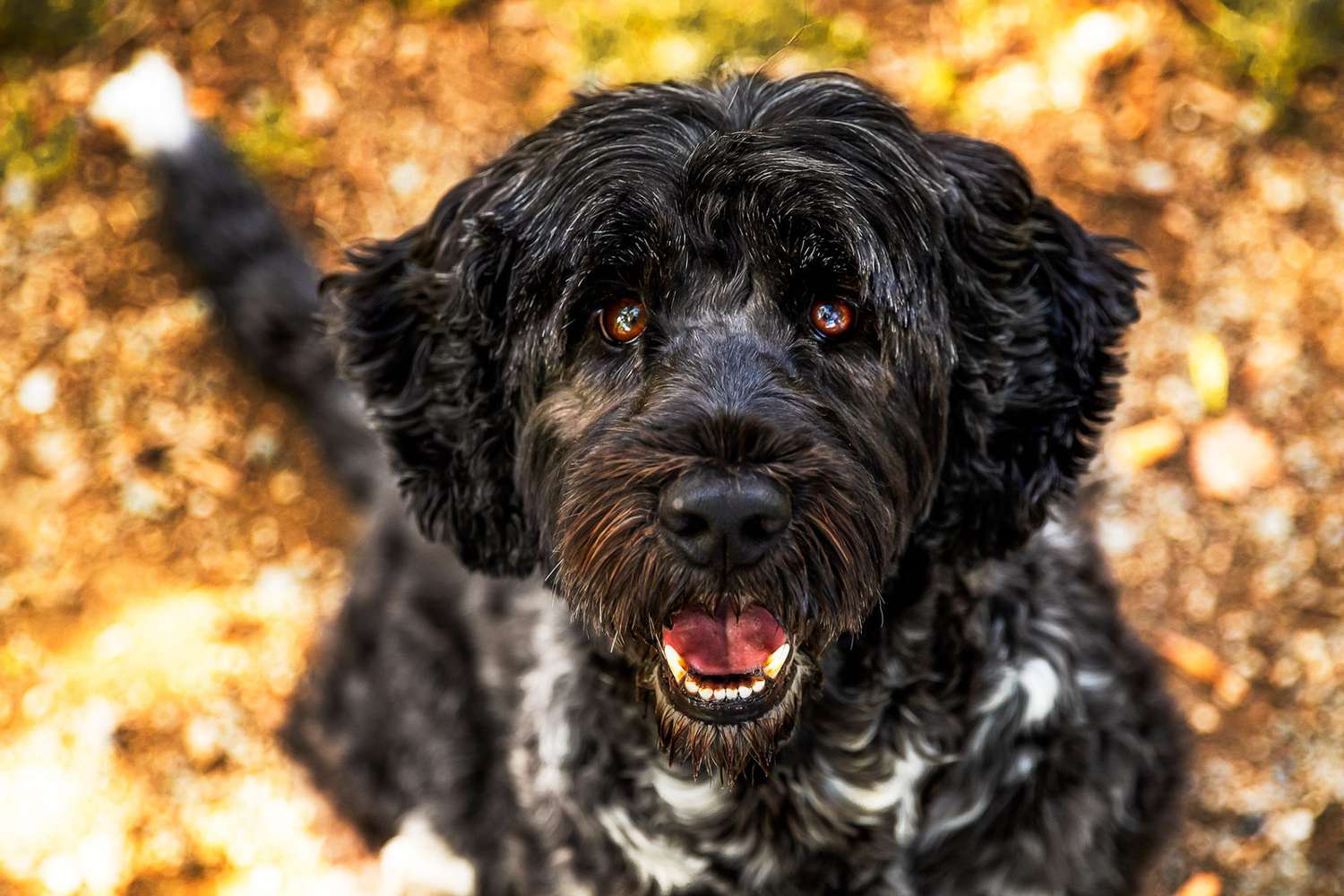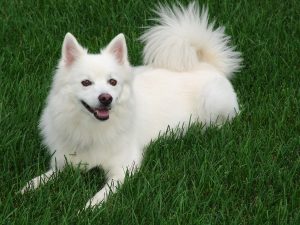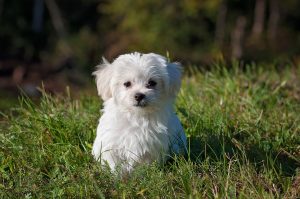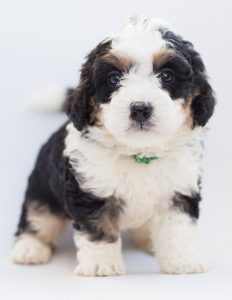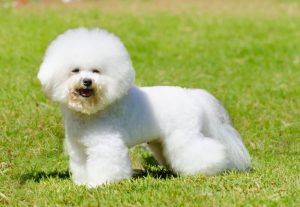Portuguese Water Dogs, affectionately known as ‘Porties,’ are as captivating in personality as they are in appearance. With their history rooted in the coastal regions of Portugal, these robust and intelligent canines were skillful companions to fishermen.
They were adept at herding fish into nets, retrieving lost tackle, and even delivering messages between boats and to shore. Today, their heritage is prominently displayed in their love for water and an active lifestyle, making them a perfect pet for families with a penchant for outdoor adventures.
These spirited dogs are more than just energetic swimmers; they are also hypoallergenic, which makes them an excellent option for families with allergy concerns.
The Portuguese Water Dog’s coat is a distinguishing feature, offering a variety of colors and patterns that not only add to their visual charm but also stand as a testament to the breed’s diverse genetic makeup.
From solid black, white, and various shades of brown to charming combinations of black or brown with white markings—often whimsically resembling knee-high socks—their coats are as unique as their spirited personalities. Let’s take a look at the spectrum of Portuguese Water Dog colors.
Key Takeaways
- Portuguese Water Dogs are highly intelligent and historically served as adept helpers to fishermen
- They are an active breed with hypoallergenic coats, suited for people with allergies
- Their coats come in a range of colors and patterns, requiring regular grooming to maintain
Breed Origins and History
The Portuguese Water Dog puppy, a breed with a storied past rooted in the Iberian Peninsula, has been making waves for centuries. With ties to Portuguese fishermen and even the White House, these dogs have an intriguing tale.
Early History in Portugal
In Portugal, the roots of the Portuguese Water Dog (PWD) can be traced back to as early as 1297. Historians believe the breed may have first appeared around 200 B.C.
These dogs were developed on the shores of Portugal, becoming fixtures in coastal communities where their skills were honed.
The Role of Fishermen
PWDs played an integral role assisting Portuguese fishermen. Their duties included herding fish into nets, retrieving lost gear, and serving as couriers from ship to shore. These tasks spotlighted the breed’s intelligence and trainability, characteristics that helped them excel in partnership with their human shipmates. At one point, the dog was even known as Portuguese fishing dog.
Popularity and Presidential Pets
Recognition of the PWD sharply rose when Barack Obama, the former President of the United States, chose Bo and later Sunny as family pets during his tenure at the White House.
The Portuguese Water Dog Club of America also played a significant role in maintaining the breed’s standards and educating the public about these affectionate and energetic dogs. While white might be a rare color, these dogs have a spectrum of coloration which has captivated dog enthusiasts around the globe. These dogs are now recognized by the American Kennel Club.
Defining Characteristics
Portuguese Water Dogs are known for their distinctive, hypoallergenic coats and a temperament that combines intelligence with energy. These pups are well-suited for work and play with a build that matches their lively spirit. They share similar appearance traits with other dog breeds in the group, like the Spanish Water Dog, Kerry Blue Terrier, and Irish Water Spaniel. But they are a distinct breed.
Physical Traits
Portuguese Water Dogs sport a robust and muscular frame, with a medium-size build that belies their agility and strength.
They typically weigh between 35 to 60 pounds and stand about 17 to 23 inches at the shoulder.
One of their most defining features is their coat, which can be either wavy or curly and is known for being low-shedding. This makes them a top pick for those with allergies—although no dog can be guaranteed to be completely allergen-free. Their curly coat is available in several colors.
Their hindquarters are strong, powering them in their work and play, while their webbed feet make them natural swimmers.
Temperament and Behavior
These dogs don’t just look the part of a versatile worker; they have the temperament to match.
They are smart and intelligent, eager to please and easy to train, which reflects their working heritage.
Portuguese Water Dogs are known for a high energy level that needs to be channeled through regular exercise and mental stimulation.
They also have a very friendly and fun-loving personality, making them excellent family members who enjoy being involved in activities with their humans.
Coat Colors and Patterns
When they think about a Portuguese Water Dog, people often picture the lively canine in its most famous black and white coat. But these dogs showcase a vibrant wardrobe of colors and varieties, each giving these athletic swimmers a distinctive look. These Portuguese Water Dog colors are a breed standard set by the American Kennel Club.
Solid Colors
The Portuguese Water Dog’s coat color range is both beautiful and relatively straightforward.
These dogs are primarily found in solid shades of black, brown, and white.
What makes each dog unique is the particular hue and texture of their coats, as some exhibit a glossy ebony black while others may have a softer, milk chocolate brown.
- Black: A deep, rich black that can shine in the sun
- Brown: Ranges from a lighter cafe-au-lait to a darker brown hue
- White: Pure white, though less common, gives these dogs a striking appearance
Markings and Combinations
Not all Portuguese Water Dogs wear a single color; many flaunt charming markings and combinations that can turn heads.
Black with white markings is quite common, where a primary black coat is dressed up with splashes of white—often giving the appearance of a dog in cute knee-high socks.
Similarly, chocolate-coated dogs might also sport these white markings, usually on their chests and feet.
While solid colors are more widespread, bi-colored coats, such as black and white or brown and white, bring a unique aesthetic to the breed.
Tri-colored dogs are considerably rare, but they do exist within the breed’s colorful palette.
Grooming and Care
Caring for a Portuguese Water Dog breed is not just about keeping them looking good, it’s vital for their health and happiness. Regular grooming prevents mats and maintains their coat’s natural luster, while the right haircut can make daily maintenance easier.
Haircuts and Styling
Portuguese Water Dogs are often spotted with two signature trims: the Retriever Cut and the Lion Cut.
In the Retriever Cut, their coat is evenly trimmed to about an inch in length, following the dog’s natural shape. This trim makes for a neat, manageable coat that highlights their athletic build.
The Lion Cut, on the other hand, leaves plush fur on the chest, hips, and tail, emulating a lion’s mane, while the rest of the body is closely clipped.
This traditional cut is not just for show; it’s designed to keep these dogs warm around their vital organs and streamlined for swimming.
Maintaining Coat Health
They’ll need their curly and low shedding locks brushed several times a week to prevent mats from forming in their dense undercoat, especially if they’re frequently in the water.
As puppies, they often bear softer, wavier coats that require gentle brushing to avoid skin irritation.
Here’s a quick checklist for your grooming sessions:
- Brushing Frequency: Several times a week with a slicker brush
- Bathing: Monthly, or as needed after swimming
- Haircuts: Every few months, depending on growth
As active dogs, they require robust exercise which, when paired with proper grooming, can reduce allergens and improve their physical health.
It’s good to note that these pups are considered suitable for allergy sufferers due to their coat’s characteristics.
Health and Activity Needs
Portuguese Water Dogs are not just adorable companions; they are athletic and intelligent, needing plenty of exercise and mental stimulation to stay healthy and happy. Let’s dive into the specifics.
Exercise and Mental Engagement
Portuguese Water Dogs, true to their heritage, are natural-born swimmers who thrive on physical activity.
Daily exercise is crucial for their well-being, so incorporating swimming, long walks, or active playtime is beneficial.
These dogs also have a sharp intellect and are highly trainable, so engaging their minds with agility training or interactive games can keep them mentally satisfied.
One might say, a tired Portie is a happy Portie.
Common Health Concerns
While Portuguese Water Dogs are generally robust, they are susceptible to certain health conditions that prospective owners should be aware of.
Hip dysplasia is a common concern. It is a condition where the hip joint doesn’t fit perfectly, which can lead to arthritis or discomfort.
Progressive retinal atrophy, an eye condition leading to blindness, and juvenile dilated cardiomyopathy, a heart disorder, also occur within the breed.
Regular check-ups with a vet can help catch these issues early on.
- Important Health Screening:
- Hip evaluation for hip dysplasia
- Ophthalmologist evaluation for progressive retinal atrophy
- Cardiac exam to detect juvenile dilated cardiomyopathy
Ensuring a schedule that balances their active lifestyle with the right preventive health measures can lead to a fulfilling and joyful life for these spirited companions.

